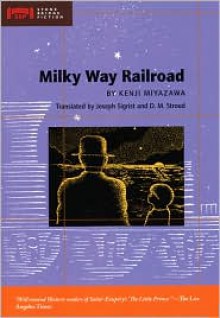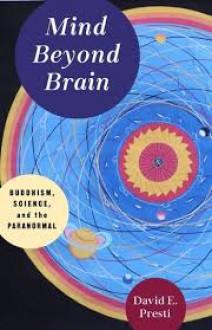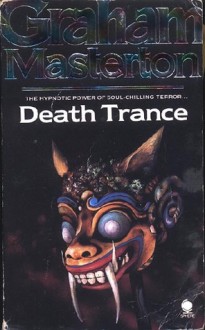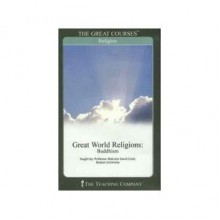
Namu myoho renge kyo. This is the mantra of Nichiren Buddhism. It means ‘Veneration to the Sutra of the Lotus of the Wonderful Law.’ To understand Kenji Miyazawa and his marvelous Milky Way Railroad, one must understand his devotion to Nichiren Buddhism.
Nichiren Buddhists believe that the whole of the dharma is in the title of the Lotus Sutra and that enlightenment can be achieved in this lifetime through faith in the Lotus Sutra. This faith is expressed by chanting Namu myoho renge kyo. Moreover, Nichiren Buddhists believe this is the only way to achieve enlightenment in our time, for we live in a time of declining dharma.
Kenji was writing Milky Way Railroad as part of an ongoing effort to proselytize for the faith he held so dearly, but he died before completing his project.
There is an earlier and a later draft of the novel. The earlier draft contains scenes that were omitted from the later draft. The later draft is clearly a refinement of the first. There is no telling what other edits Kenji would have made had he lived long enough to finish his book. Yet even unfinished, Milky Way Railroad is a beautiful work of art.
The translation by Joseph Sigrist and D. M. Stroud differs most noticeably from that of Sarah M Strong by including some passages from the earlier draft. Strong also includes these earlier passages, but she puts them in a separate section of her book, omitting them from the main text.
This review is about Sigrist and Stroud’s Milky Way Railroad, but will occasionally include references to Strong’s Night of the Milky Way Railway, especially where the two texts differ in content or emphasis.
Dream Journey
Milky Way Railroad is a dream journey. And it is not just a dream for Giovanni. It is a dream for the reader too. The first thing the reader notices about the story is that the main characters of this Japanese novel have Italian names. Later in the story Giovanni meets Americans who all have Japanese names. Thus has Kenji subverted our expectations right from the start. He reproduces the experience of dreaming by rendering the familiar unfamiliar and vice versa.
The dream elements are more numerous in the earlier draft. In the later draft, Kenji employs them with greater subtlety. For example, the train stops at Swan Station for a twenty minute rest stop, but when Giovanni and his friend Campanella disembark, they are alone. None of the other passengers or railroad employees are anywhere to be seen (67). Later the Bird Catcher is suddenly outside of the train and then just as suddenly back inside (73, 76). These and a few other such mysterious happenings are enough to convey the surreal atmosphere of the dream.
The Way to Heaven
Milky Way Railroad is not just a dream journey. It is a dream journey to heaven. The train is the vehicle. The Sanskrit word yana, as in Mahayana, means vehicle. It is the way to get to heaven. Giovanni’s ticket to heaven is a Nichiren mandala. In “The Mysterious Forest,” he expresses his eagerness to get to heaven and wonders if anyone will go with him. He is saddened at the thought that no one will go all the way to heaven with him (104).
When Kenji became a Nichiren Buddhist, he became a passionate proselytizer for the faith. Before his conversion, he was a Jodo Buddhist like his family. Jodo Buddhists worship the celestial Buddha Amida and pray to be reborn in the paradise of his Pure Land. After his conversion, Kenji wanted to convert his family from Jodo Buddhism to Nichiren Buddhism. This was a source of constant tension between Kenji and his family.
However, the greatest tension was caused by his efforts to convert his best friend Hosaka Kanai. Apparently his religious fervor strained the friendship to the point that his friend avoided his company. This distressed Kenji, not merely because of the strained friendship, but more importantly, because his friend’s soul was in danger.
There is both beauty and pathos in these vigorous attempts at conversion. From the point of view of his loved ones, it must have been exasperating. But from Kenji’s point of view, it was a matter of life and death. If they didn’t become Nichiren Buddhists and chant the daimoku, they would not escape samsara; they would not achieve enlightenment in this lifetime. And he was determined to save them. How could he not be? How could he not do everything in his power to save those dearest to him? Milky Way Railroad gives some insight into the mind of the religious proselytizer.
The religious nature of this story is more evident in Strong’s translation than in Sigrist and Stroud’s. Some of the differences may be less meaningful to the Western reader. For example, in “The Milky Way Festival,” Sigrist and Stroud translate “Sagittarius, send down the rain” (36)! Strong translates it as “Centaurus, send the dew” (17)! Dew is a traditional Japanese symbol of ephemerality.
However, other differences in translation are obvious even to the reader with no knowledge of Japanese religion or philosophy. Consider the following.
In “Giovanni’s Ticket,” Sigrist and Stroud translate “It’s a ticket for going straight to outer space” (80). Strong translates “What you have here is a ticket that even lets you go to the real heaven” (53).
In “Shipwrecked Children,” Sigrist and Stroud translate “And in order to reach true happiness, you have to suffer a lot” (90-91). Strong translates “If it is for the sake of attaining the supreme happiness, tragedy, too, in all sorts of forms can be the divine will” (58).
In “The Mysterious Forest,” Sigrist and Stroud translate “...isn’t there anyone who’ll stay with me all the way to the end” (104)? Strong translates “...who will go on and on with me forever (63)?
Strong’s translation choices ~ “the real heaven,” “the divine will,” and “forever” ~ better convey the religious message of the story than Sigrist and Stroud’s choices.
The Wonders of Science
Sigrist and Stroud’s choice of “outer space” rather than “real heaven” clearly plays down the religious meaning of the story, but it does fit in squarely with one of Kenji’s other themes ~ science. The novel opens with Giovanni, Campanella, and the other schoolchildren having a lesson in astronomy.
Throughout the novel Kenji uses scientific vocabulary: “locomotive,” “compass,” “watch repair shop,” “neon light,” and “phosphorescence,” to mention only a handful. In “Home,” Giovanni expresses pride in “the big crab shell and the reindeer antlers” his father donated to the school (29). In “Northern Cross and Pliocene Seashore,” Giovanni and Campanella meet a paleontologist looking for fossils.
Science was not merely an abstract interest for Kenji. He was an agricultural scientist. Moreover, his interest in science and his devotion to religion were not two different sides of him. They were intimately intertwined. As a Nichiren Buddhist, Kenji was deeply concerned about the plight of the poor. As an agricultural scientist, he wanted to work to alleviate this suffering.
In Milky Way Railroad, Giovanni is poor. And because he is poor, he is ridiculed by his schoolmates (with the exception of Campanella). When the other children run off to play at the Milky Way Festival after school, Giovanni must go to his after-school job. Kenji’s hopes of feeding the poor through agricultural science are later symbolized by the lush cornfields of America that the children see from the train windows in “From the New World.”
Science and Religion in Harmony
Kenji’s combination of science and religion is apparent not only in the ultimate message of the story, but in its construction as well. During their astronomy lesson, the children learn about the Milky Way galaxy, the constellations, and the vast emptiness of space between the stars.
This lesson takes place at the time of the Tanabata Festival. The Tanabata Festival, or Milky Way Festival, is a celebration of the annual meeting of Hikoboshi and his bride Orihime ~ the stars Altair and Vega. Condemned to separation, they are permitted to meet once a year on the seventh day of the seventh month when magpies spread their wings to form a bridge across the river of heaven.
The vast emptiness of space is reminiscent of the Buddhist concept of Sunyata ~ the true nature of reality. The train that crosses this vast emptiness is the vehicle (yana) that transports one to heaven.
The allusion to the fourth dimension (time) in “Giovanni’s Ticket” is an allusion to Einstein’s theory of relativity. Here also Strong’s word choice is more appropriate to the religious nature of the story than Sigrist and Stroud’s. Strong translates “Milky Way Railway of the imperfect, illusory fourth dimension” (53), where Sigrist and Stroud translate “imperfect, fantasy Fourth Dimension Milky Way Railroad” (80). The word “illusory” conveys the Buddhist idea that all existence is an illusion. The word “fantasy” does not have the same religious connotation.
After the Tanabata Festival comes the Obon Festival when the spirits of the dead return to their families. At the end of their nine day visit, their families send them off by setting lamps adrift on the river (just as the schoolchildren do inMilky Way Railroad).
Here Kenji combines two visions of the heavens ~ that of Buddhist cosmology and that of the science of astronomy. There are myriad Buddha worlds, but they cannot be seen by the unenlightened. Are they out there? In the other galaxies? In the vastness of space? Are the spirits of the dead there? Is his late sister, his beloved Toshiko, there?
Vegetarianism
On board the train, Giovanni and Campanella meet the Bird Catcher. When Giovanni asks if he catches birds for “specimens,” the bird catcher replies that he catches them for food. Then he invites Giovanni and Campanella to eat some goose. This scene is odd and I think it is one of the scenes that elevates this story from mere novel to mythopoeic masterpiece. The bird catcher breaks off a goose’s leg “as if it were made of chocolate” (71) and when the boys eat it Giovanni notes that it tastes like cake.
As a Buddhist, Kenji was a vegetarian. If only birds were made of cake, it would not be a sin to eat them. But they are not made of cake, and so Kenji’s protagonist feels great sympathy for the bird catcher whose profession requires him to take life.
The tale of the scorpion in “The Scorpion’s Fire” takes the theme of vegetarianism to the next level. The scorpion spent its days killing prey in order to survive, but when it was chased by a predator, it rebelled against its fate. In doing so, it fell into a well.
“’I have taken the lives of I don't know how many living things in my time. But when the weasel tried to catch me, how I tried with all my might to escape! In spite of that, I end up here. Why didn't I just quietly accept my fate and give myself up to the weasel? If I'd done that, the weasel would have had food to live one day longer. Oh, God, look into my heart! Instead of throwing my life away vainly like this, grant that my body may be used for the true welfare of all’'”(116).
In this fable, which has the quality of a jataka tale, the scorpion makes a bodhisattva vow and becomes a fire to light the darkness. With the Bird Catcher, Giovanni feels the first stirring of the compassion that will inspire his own bodhisattva vow.
“If it would really make the bird catcher happy, Giovanni was ready to stand on the radiant bank of the Milky Way River catching birds himself, even for a hundred years” (81).
Dialogue with Christianity
The constellations of the southern and northern crosses represent Christianity. In “Shipwrecked Children,” Giovanni and Campanella are joined by two children and their tutor, all victims of the sinking of the Titanic. Kenji was fifteen years old when the Titanic sank. He was powerfully impressed by the stories he heard of piety and self-sacrifice. He was especially moved by stories of the victims singing hymns to the very end. Perhaps the hymn-singing reminded him of the chanting of the daimoku. Thus the Christians inMilky Way Railroad express their faith by singing hymns.
There is one obvious symbol of Christianity in this chapter and, I believe, another subtler one. The obvious one is the apples the lighthouse keeper gives to the children. As a Christian symbol, the apple represents the Garden of Eden. Moreover, the apple is also the perfect food, clearly prized by Kenji the agricultural scientist and vegetarian. The subtler symbol is the roses. Kenji had some knowledge of Christianity, so it is possible that he was aware of the rose as a symbol of the Blessed Virgin.
But for all Kenji’s admiration for his Christian characters, he did not believe all religions were equal. Just as he believed science was subordinate to religion, so he believed Christianity was subordinate to Nichiren Buddhism. The strength of his religious beliefs and the zeal with which he proselytized for the faith can be seen in a letter he sent to his colleague Miyamoto Tomoichi on March 10, 1921. In an excerpt from the letter, translated by Jon P. Holt, he writes:
“I absolutely refuse [to believe] that the ends are the same no matter what religion [you belong to]. People who fail to choose the right religion fall into hell, become demonic ilk, or are reborn as animals” (336).*
While Kenji’s proselytizing voice had softened between the early 1920s and his death in 1933, his faith remained as strong as ever. In “The Southern Cross,” Giovanni and the girl from the Titanic quarrel over whose God is the real God, with Giovanni vehemently asserting that her God is a “false God” (120). He says: “We have to make a place even better than heaven right here” (120). This, again, is the nature of the bodhisattva vow: One seeks not one’s own nirvana, but the enlightenment of all beings, and to do that, one must be here on Earth doing the work of the bodhisattva.
Love and Death
Naturally death is a theme in this journey to heaven. The theme begins early in the story with the excavation of fossils at the Pliocene Seashore, perhaps even earlier with the reference to “the big crab shell and reindeer antlers” (29) that were a gift from Giovanni’s absent father. It continues with the death of animals: the birds caught by the bird catcher, the bird killed by the American Indian in “From the New World,” and the death of the scorpion.
But more specifically, this is a story of the death of people. With the exception of Giovanni, who alone has a round-trip ticket, everyone on the train is dead. When the Coal Sack comes into view, Campanella is suddenly gone. The Coal Sack is an area of complete blackness resembling a hole in the galaxy, a hole in the heavens. This is when Giovanni makes his own bodhisattva vow: “You know, if it’s for everyone’s happiness, I’m ready to have my body burned like that Scorpion—even a hundred times” (125).
The connection between Giovanni’s best friend Campanella and Kenji’s best friend Hosaka is obvious. Giovanni wants Campanella to accompany him on his spiritual journey, but Campanella will not journey with him “all the way to the end” (104) just as Hosaka would not join Kenji in becoming a Nichiren Buddhist.
But Campanella also represents Kenji’s sister Toshiko, for it is in the nature of dreams that one person can represent more than one person. Thus Giovanni’s experience of Campanella’s death represents Kenji’s experience of Toshiko’s death. Kenji was devastated by the loss of Toshiko. She remained ever-present in his life, just as the fossils and “the big crab shell and the reindeer antlers” in Milky Way Railroad represent the continued presence of that which is dead. But Kenji also needed to come to terms with her death and this he did by recognizing that he cannot only love one person. He had to love all people, all living things, as he loved Toshiko.
There’s a chapter in the Sigrist and Stroud translation from the earlier draft of the novel. Strong includes it separately from the main text. Like much of the material omitted from the earlier draft, this chapter lacks subtlety. There is, however, one excellent line in “The Professor” that I believe is worth preserving: “everyone is Campanella” (129).
For Kenji, everyone is Toshiko.
A Children’s Story
Milky Way Railroad is a complex novel, but it can also be enjoyed superficially as a children’s story about a boy who accompanies his dead friend on his journey to heaven. It is bittersweet, for Campanella has been reunited with his dead mother in heaven, but Giovanni must return to Earth without his best friend. Yet children are not exempt from the experience of loss and they too need a way to integrate it into their lives.
Kenji’s sensitive story presents this experience gently and spiritually. And the ultimate message of the story ~ to love all beings ~ is healing and heartening. It is a message which both honors the dead and aids the living. It is a message of action, for love is not merely emotion. Love is action. It is what one does. It is one’s work in the world. Peace.
Note
* Holt, Jon P. “Ticket to Salvation: Nichiren Buddhism in Miyazawa Kenji’s Ginga tetsudō no yoru.” Japanese Journal of Religious Studies 41.2 (2014): 305–345.


 Log in with Facebook
Log in with Facebook 









